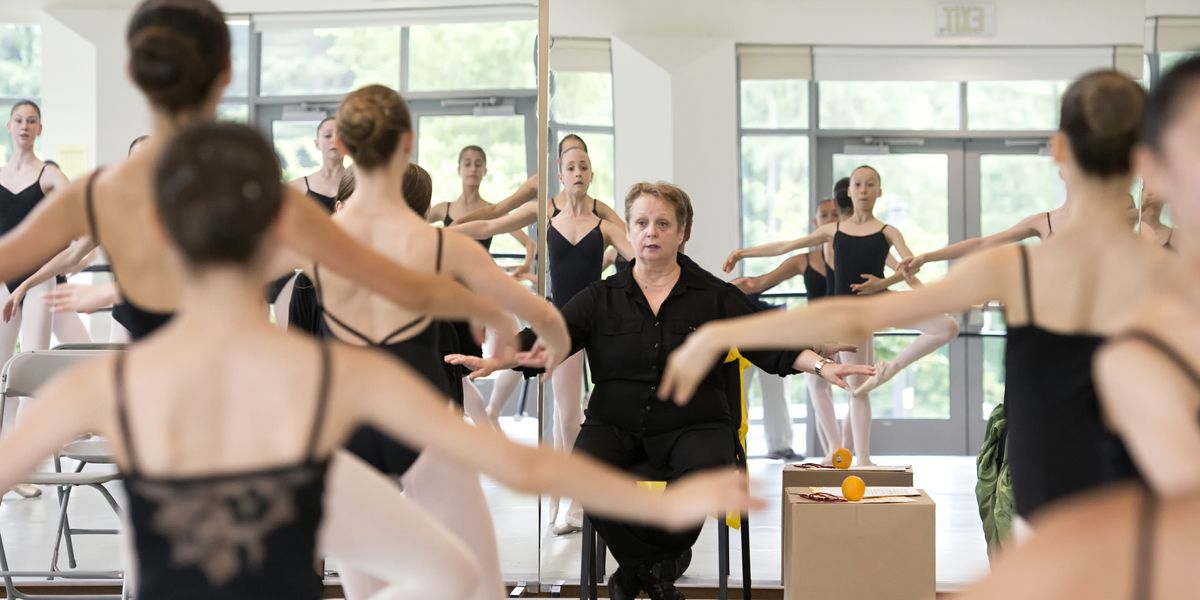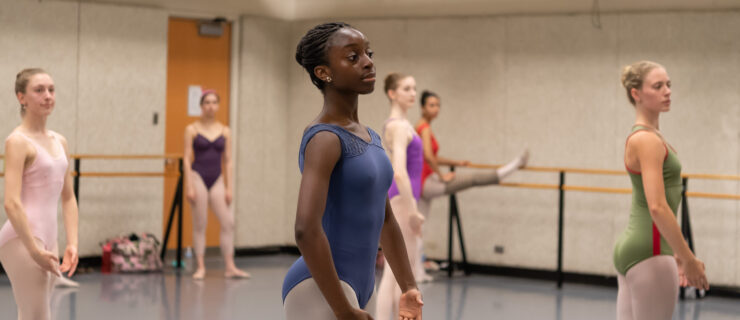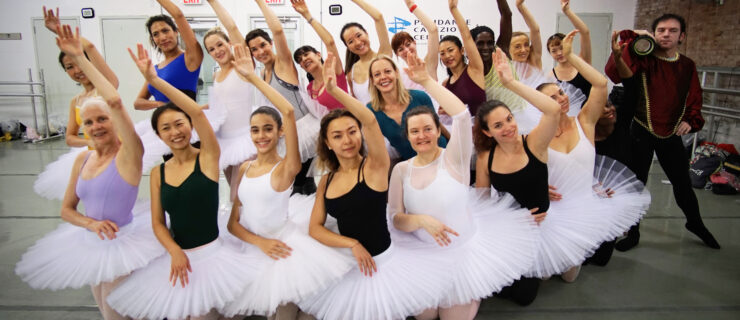Are You Sabotaging Your Summer Intensive Audition?
When Complexions Contemporary Ballet’s summer intensive program director Meg Paul auditions students for its Detroit intensive, there’s one thing that catches her eye for all the wrong reasons. “It’s a real pet peeve of mine when a dancer keeps shifting her eyes to me during a phrase,” she says. “It tells me that she’s not fully invested in the movement, that she’s more interested in being watched than in embodying the choreography.”
Every summer intensive director has their own list of audition deal-breakers, but there are a handful of universal turnoffs to avoid. “Yes, we want the most talented students, but when talent is paired with a bad attitude or improper etiquette, it gives us pause,” Paul says. While certain behaviors may seem minor, they can make all the difference when it comes time for scholarship offers or even acceptance decisions.
Not Presenting Yourself Professionally

Lily Zhu in Aydmara Cabrera’s class at Princeton Ballet School’s summer intensive. Caileigh Gold, Courtesy Princeton Ballet School.
An audition is a first impression, and you want to look your best. This begins with researching the specific intensive’s audition requirements. “Our audition has a dress code, and we expect dancers to respect that,” says Rina Kirshner, director of the Russian American Foundation’s Bolshoi Ballet Academy programs. “We want dancers to stand out through hard work and talent, not brightly colored leotards or flowers in their hair.”
Even if the audition doesn’t have a strict dress code, opt for a basic look, and prep in advance to make sure your shoes and tights are in good condition. “We want to see neat hair with clean shoes that are properly sewn,” Paul says. “Holey shoes or ribbons that are just wrapped around the foot are unacceptable.”
Presentation extends to your audition shots, as well. “You don’t need to hire a professional photographer, but your photos should actually represent how you look,” says Pamela Levy, director of Princeton Ballet School. Glamorous headshots aren’t as helpful to school directors as a clean photo with your hair as it will be during the audition—likely in a bun. “Don’t manipulate your body shots in any way, either,” Levy says. “Your arabesque and tendu photos should be easy to see and should accurately represent your technique.”
Ignoring Class Etiquette
Be prepared to abide by the basic rules of class etiquette, even when you’re not dancing. “You shouldn’t be eating, chatting or checking your phone on the sides,” says Paul. “You shouldn’t even be sitting.” Directors expect dancers to take advantage of every second of the audition, and this means working through the combination on the sides, or at least watching the performing groups and listening to their corrections. “We make a point to observe dancers on standby,” she adds.
Overly familiar interactions with the faculty giving the audition, even if you know them well, can also be a turnoff. “You can of course say ‘hi,’ but maintain a boundary of professionalism,” Paul says. “Being too friendly with the teachers can make other auditionees feel like it isn’t a level playing field.”
Where you stand in the room also matters. “We want to see dancers who understand how to change lines, and who pay attention when it’s their turn to go across the floor,” Levy says. Kirshner adds that a dancer who is eager to remain front and center for the entire audition can come off as aggressive or even arrogant. “We want dancers who can work as a team once they’re in the program, and this behavior suggests otherwise,” says Kirshner.
Not Giving 100 Percent

Dwight Rhoden in class at Complexions’ Summer Intensive. Courtesy Complexions Contemporary Ballet.
On the opposite end of the spectrum, dancers who hide in the back, or who choose not to perform certain combinations (barring injury), can come off as apathetic or unmotivated. “Our program is rigorous, with at least five hours of class a day,” Kirshner says. “If an auditionee can’t sustain full energy for the hour-and-a-half audition, how are they going to survive the summer?”
Another surefire way to make directors question your mental endurance is by giving up in the middle of a combination. “It’s so upsetting to watch,” says Levy, who counts combination dropouts as one of her top audition pet peeves. “It doesn’t matter if you forget a step or fall out of a pirouette. Maintain a pleasant expression and keep working through it, and I may not even notice!” Paul adds that a mid-combo mistake is actually a great opportunity to demonstrate your resilience. “We know these things happen. Show us you can work through those moments without frustration, and we’ll see that you’re quick on your feet.”
Having a Bad Attitude
Auditions can be tense and stressful, but trying to maintain a positive attitude—and remembering that you are there because you love to dance—can go a long way towards improving your chances and your overall experience. Levy advises auditionees to be mindful of negative facial expressions. She has personally overlooked students with excellent technique because of disinterested demeanor. “It could be a sign of nerves or concentration, but we may think you’re having a bad time,” she says. “Fake it till you make it, and crack a smile every once in a while to break the tension.”
How you respond to corrections says a lot about your overall attitude. “Make sure your stance isn’t closed off to the feedback,” Paul says. “Don’t look down or cross your arms. Make eye contact and show that you are willing and excited to learn from the correction.”
When it all comes down to it, school directors are selecting students they would enjoy working with for the length of the program. “We want students who are hungry, who have that fire and work ethic to thrive,” says Paul.
Besides, a good attitude may help directors overlook less-than-perfect technique. “If we see a dancer on a slightly lower level, but she’s glowing with a love of dance in her eyes,” says Kirshner, “we may accept her in the program to offer her something she’s never been exposed to before.”





